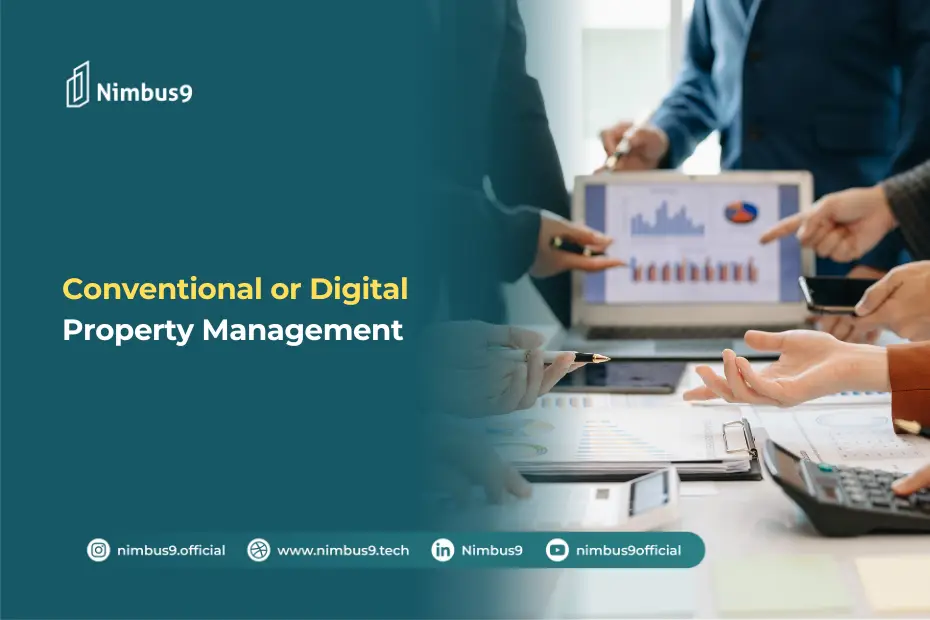Property management involves more than just collecting rent or fixing maintenance issues. It’s about overseeing daily operations, keeping properties in top condition, and ensuring tenants stay satisfied.
However, as technology evolves, property management methods have changed dramatically. Many owners and managers are moving away from traditional approaches and embracing digital property management systems like Nimbus9.
Let’s explore how these two management styles differ — and why going digital can transform the way you manage real estate.
What Is Conventional Property Management?
Conventional property management uses traditional, manual methods to run operations. It relies heavily on paperwork, spreadsheets, and face-to-face communication.
While this approach has worked for decades, it often struggles to keep up with today’s demands for speed, accuracy, and data-driven decision-making.
The Main Challenges of Conventional Management
-
Everything Is Manual
Managers record finances and administration on paper or spreadsheets. Communication with tenants happens through calls, letters, or in-person meetings, which often slows down responses.
-
Processes Take Too Long
Rent collection, bill payments, and expense tracking require manual effort. As a result, delays and errors become common, reducing efficiency and tenant satisfaction.
-
Documents Go Missing
Leases, receipts, and reports pile up as printed documents. Over time, important files get misplaced or damaged, creating unnecessary stress and administrative work.
-
Reports Lack Accuracy
Without digital tools, it’s difficult to track performance or identify business trends. Managers often rely on intuition instead of reliable data, which leads to missed opportunities for improvement.
-
Data Isn’t Secure
Since information is scattered across multiple files and folders, it becomes hard to protect. This lack of centralized storage increases the risk of data breaches and non-compliance with regulations.
What Is a Digital Property Management System?
A digital property management system automates and streamlines property operations using technology. Instead of juggling papers and spreadsheets, managers use one integrated dashboard to monitor tenants, maintenance, and finances.
Systems like Nimbus9 help managers save time, reduce mistakes, and make smarter business decisions.
The Key Benefits of Going Digital
-
Automation Boosts Efficiency
All property, tenant, and financial data appear in one easy-to-use dashboard. Tasks like maintenance scheduling, rent collection, and expense tracking run automatically, freeing managers to focus on strategy.
-
Payments Become Simple
With automated billing and digital payment options, tenants can pay rent anytime. Meanwhile, managers can view financial performance in real time — making it easier to plan and budget accurately.
-
Communication Gets Faster
Tenants can send service requests, view lease details, and receive updates instantly through a mobile app or online portal. This faster communication builds trust and keeps tenants satisfied.
-
Real-Time Insights Drive Decisions
Nimbus9 provides instant access to reports and analytics. As a result, managers can identify trends early, make data-driven decisions, and boost overall profitability.
-
Security Becomes Stronger
Digital systems store data securely and only allow authorized access. This approach protects sensitive tenant information and ensures compliance with industry regulations.
Conventional vs Digital Property Management (Nimbus9)
| Aspect | Conventional Management | Digital System (Nimbus9) |
|---|---|---|
| Process | Manual and paper-based | Automated and digital |
| Efficiency | Slow and error-prone | Fast and accurate |
| Communication | Calls, letters, or meetings | Online portals and instant notifications |
| Financial Management | Manual billing and payments | Automated billing with digital payments |
| Maintenance | Time-consuming and reactive | Scheduled automatically through the app |
| Analytics | Limited and delayed | Real-time, data-driven insights |
| Security & Compliance | High risk of data loss | Centralized and secure with access control |
Why Digital Property Management Wins
Switching from a manual to a digital system is no longer optional — it’s necessary.
When property managers use tools like Nimbus9, they save time, reduce human error, and gain clearer visibility into every aspect of their operations.
Instead of focusing on repetitive administrative work, managers can develop strategies to grow property value and improve tenant experience.
As a result, property owners enjoy higher returns, fewer operational headaches, and stronger tenant relationships.
Final Thoughts
The property management industry is moving toward digital transformation — and for good reason.
Digital systems like Nimbus9 simplify workflows, increase transparency, and strengthen data security. More importantly, they allow managers to focus on what truly matters: creating value and delivering a better experience for tenants.
If you’re still managing your properties the old-fashioned way, now’s the time to switch.
A digital property management system doesn’t just make your work easier — it makes your business smarter, faster, and more competitive.
